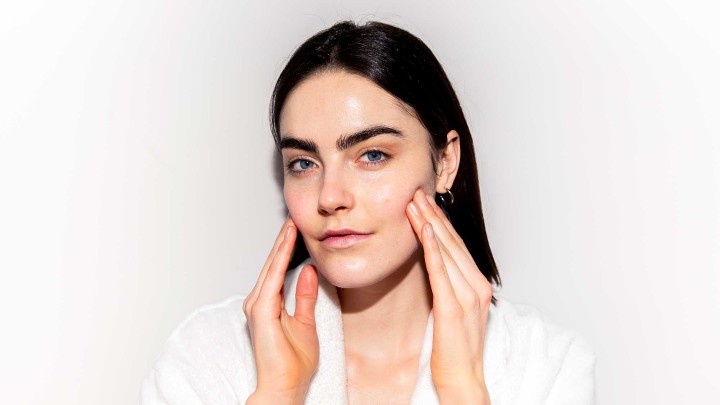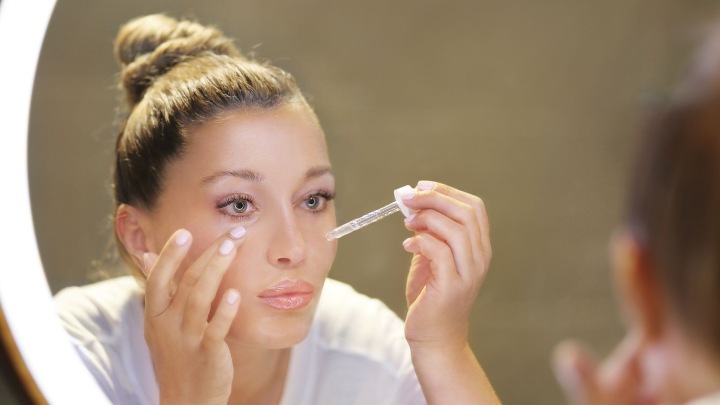Anyone would become skeptical at the sound of applying two skincare acids to the skin. However, not all acids make this list. Hyaluronic acid is not an exfoliating acid or an AHA, like glycolic acid, which makes it safe to pair and layer both acids on your skin.
While some skincare ingredients are powerhouses and load your skin with maximum benefits, they are not always in a good-for-body relationship with your skin. Glycolic acid, for instance, is an excellent exfoliant yet can dry out your skin.
Hyaluronic acid is a timely hero. Every skin type and skincare ingredient finds it very compatible. Read on to see how and why you should use hyaluronic acid with glycolic acid in your skincare routine.
What are the benefits of using hyaluronic acid?
Hyaluronic acid is a skin hydrator. Serums and creams that contain hyaluronic acid are moisturizing products.
Hyaluronic acid has humectant properties, which attract water molecules from the atmosphere and retain them in the layers of your skin. This acid is very stable and generally tolerated by every skin type.
It uses its humectant property to address various skin issues and consequently improve the appearance and texture of your skin. Topical application of hyaluronic acid helps to delay signs of aging and improve the appearance of already manifested signs.
It puts your skin in a good place to synthesize collagen and plumps your skin back to its youth. Furthermore, sensitive skin conditions like eczema and rosacea can be managed with hyaluronic acid-based products because it is very soothing.
Hyaluronic acid may not look or feel the part of an effective acne treatment, but it is an excellent ingredient for preventing and managing acne breakouts.
Additionally, moisture is an irreplaceable boon for every skin type. Adequate moisture enhances the skin’s natural barrier, which is a gateway to optimum protection and skin immunity.
It helps to stimulate skin cell regeneration which helps to fade scars and reveal a brighter complexion.
What are the benefits of using glycolic acid?
Glycolic acid is the smallest of the alpha-hydroxy acids (AHAs).
It has small molecules that easily penetrate the skin to slough off dead skin cells and reveal a smooth, bright complexion.
Glycolic acid is commonly described with the word keratolytic. This is because it loosens the bond holding the dead skin cells together and makes it easier to get them off your skin. More so, it refines your pores and minimizes their appearance.
This exfoliating acid is a humectant just like hyaluronic acid. Unlike other exfoliating acids, to a reasonable degree, it moisturizes your skin. Also, it stimulates the synthesis of skin proteins like collagen and elastin.
As an exfoliant, this AHA helps to unclog your pores of debris, prevent acne breakouts, and fade acne scars.
Its exfoliating properties also extend to giving you an even skin tone by fading discolorations which may be due to exposure to sun rays, age spots, or hyperpigmentation.
In addition, glycolic acid penetrates your skin with its molecules and makes your skin ready to receive the ingredients that come after it. Therefore, they can be more effective.
Can you use hyaluronic acid with glycolic acid?
Yes, you can.
Hyaluronic acid pairs well with any AHA/BHA. Unlike these acids, it does not exfoliate your skin or cause it to dry out. Hyaluronic acid works like a balm when used after these acids.
Glycolic acid is an exfoliating acid that sloughs dead skin cells off your skin. The aftermath of this process is that a more sensitive layer of your skin is revealed.
Although this acid is considered a mild AHA, it still causes the skin to dry out, especially after peels. Including hyaluronic acid in your routine on the days you exfoliate with glycolic acid is the best way to protect your skin.
Hyaluronic acid replenishes moisture, keeps your skin from getting too dry, and creates a barrier that prevents irritants from penetrating your skin.
Furthermore, using both acids stimulate your collagen and elastin synthesis, promoting cell turnover and tissue regeneration.
Glycolic acid exfoliates your skin, gets rid of dirt, and treats acne. However, the consequent drying effect, if not managed, can cause more breakouts.
Hyaluronic acid soothes your skin, helps to prevent more breakouts, and keeps the affected area moistened to prevent the formation of scars. These two acids can work in tandem to fade acne scars and even your skin tone.
Can you use hyaluronic acid with glycolic acid to moisturize your skin?
Yes, you can.
Hyaluronic acid and glycolic acid can help maintain moisture levels. Glycolic acid also has humectant properties. Therefore, pairing it with the popular hyaluronic acid will boost your skin’s moisture.
Together, they attract water molecules, bind to them, and trap them in the layers of skin. Consequently, moisture retention is your gateway to escaping skin conditions like the appearance of fine lines and wrinkles.
Can you layer hyaluronic acid with glycolic acid?
Yes, you can layer them.
Layering is the best way to treat your skin to the amazing benefits of using hyaluronic acid with glycolic acid. Following glycolic acid treatment with hyaluronic acid will perfectly target replenishing moisture.
Moreover, glycolic acid has tiny molecules that penetrate deep into your skin and carry out specific functions. After exfoliating your skin, a sensitive layer that can receive other skincare ingredients is revealed.
In this state, hyaluronic acid can effectively attract and retain moisture in the layers of your skin. Also, it creates a protective layer over the delicate layer of skin to prevent moisture loss and consequent dryness.
When you layer glycolic acid with hyaluronic acid, the latter enhances the effectiveness of the former to yield better results.
How to use hyaluronic acid with glycolic acid

Do a patch test
Before you get to glycolic acid treatment, you should carry out a patch test to check for possible side effects and take caution.
Apply glycolic acid to a side of your chin and leave it on for 20-30 seconds to see how your skin fares with the acid. If you notice a stinging or burning sensation before 30 seconds, rinse off the acid and discontinue use.
However, if your skin does not go red, rinse it off after 30 seconds but continue to observe the skin around your chin for any noticeable and uncomfortable changes. If there are none, you can use glycolic acid.
Cleanse
Any effective skincare routine begins with clean skin. Cleansing is best done after a bath. Use a mild, foamy cleanser to clean your face. Your cleanser should not contain salicylic acid, lactic acid, or even glycolic acid. Otherwise, you’ll be over-exfoliating.
Dampen a cotton pad with the cleanser and wipe across your face. Do not apply pressure or rub to avoid irritating your skin. Make sure you remove every soap, oil, and makeup residue. Then, dry your face with a clean towel.
Apply glycolic acid
Glycolic acid should be applied to dry skin. Other skincare ingredients work with damp skin. Exfoliating acids, on the other hand, are more effective with dry skin.
While damp skin opens your pores and makes the ingredients more effective, it can be the reason for irritations.
To protect the sensitive areas of your face, like your eyes, nostrils, and mouth, you can apply a thin coat of petroleum jelly or shea butter around those areas. It will prevent glycolic acid from reaching there.
Dampen a clean cotton pad with a glycolic acid product. Gently sweep across your forehead, to the sides of your face, and then your cheeks and chin.
If an exfoliating scrub, leave the solution on your face for 6-10 minutes. Then, rinse it off with clean, lukewarm water.
If your face begins to turn red before 6 minutes, you can rinse glycolic acid off. Afterward, dry your face with a towel but retain some moisture.
Layer hyaluronic acid
While your face is still damp, apply hyaluronic acid serum or moisturizer to calm your skin and replenish moisture. Take some drops of serum and gently pat the serum on your skin. If you’re using a cream, a pea-sized amount is enough to moisturize your skin.
Continue applying hyaluronic acid for up to three days after using glycolic acid treatment. This is because your skin is still highly prone to drying out.
Shield your skin with SPF
Sunscreen is an important part of everyday routine, especially daytime routine. Moreover, glycolic acid reveals a sensitive layer of your skin. Therefore, your skin is exposed to UV ray sensitivity.
Layer on broad-spectrum sunscreen to shield your skin from extreme sun damage.
Helpful tips to help you with glycolic acid treatment
- Do not use products that contain AHAs/BHAs and retinol at least 2-3 days before and after glycolic acid treatment
- Do not use face scrubs, masks, or hair removal waxes before and after you use glycolic acid
- Moisturize your skin for up to three days after glycolic acid treatment
- Avoid frequent and prolonged exposure to sunlight 5 days before and after you apply glycolic acid to your skin
- Stay away from makeup foundation for the first 24 hours after glycolic acid
- Keep your hands off your face to avoid putting microbes or stirring irritation on your face
- Do not go out without sunscreen
Are there any side effects of using hyaluronic acid with glycolic acid?
No, there aren’t.
Using hyaluronic acid with glycolic acid in your routine is completely safe. Hyaluronic acid soothes your skin and prevents glycolic acid from drying out your skin after exfoliation. Together, glycolic acid will do more than it can do when used alone.
FAQs
Does hyaluronic acid come before or after glycolic acid?
Hyaluronic acid comes after glycolic acid.
After cleansing your face and exfoliating with glycolic acid, use hyaluronic acid immediately after. It helps to replenish moisture and protect your natural barrier from any disruption.
Also, it calms your skin and prevents any future irritation. Continue applying hyaluronic acid days after exfoliation to replenish moisture.
Should you use hyaluronic acid after a glycolic peel?
Yes, you should.
A glycolic peel can dry out and irritate your skin even days after use. The best way to prevent this is to moisturize your skin with hyaluronic acid after every peeling.
Can you use vitamin C with hyaluronic acid and glycolic acid?
You can incorporate vitamin C into your glycolic acid and hyaluronic acid treatment if you do not plan to apply all three at the same time.
Vitamin C and glycolic acid are active at different pH values and do not tolerate each other. Moreover, vitamin C is quite unstable; this can render glycolic acid ineffective, making it a waste to layering both ingredients.
What should you not use with glycolic acid?
Do not use vitamin C, retinol, niacinamide, salicylic acid, and other AHAs/BHAs.
Pairing glycolic acid with some of these ingredients may over-exfoliate your skin and cause it to dry out excessively.
In addition, some of these ingredients will strip glycolic acid of its goodness and render it useless.
Conclusion
Hyaluronic pairs well with AHAs/BHAs without causing any side effects. Skin experts recommend you use this humectant to moisturize your skin after exfoliation. Unlike other acids, it’s mild and soothing.
Hyaluronic acid and glycolic acid make a good pair for exfoliation, chemical peeling, and any glycolic acid treatment. However, before you use glycolic acid, you should run a patch test to check your skin’s compatibility with the acid.
Most importantly, you should always look through the ingredient list on your product and follow the necessary instructions.
Thanks for reading.
You can get more helpful beauty tips here on MBGON.
